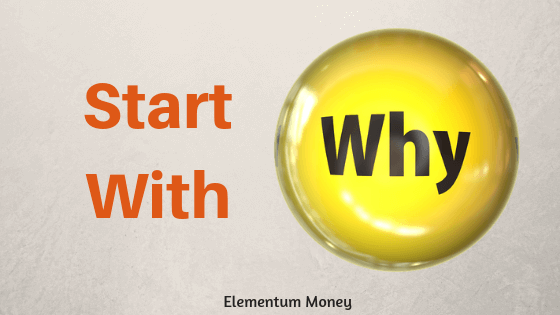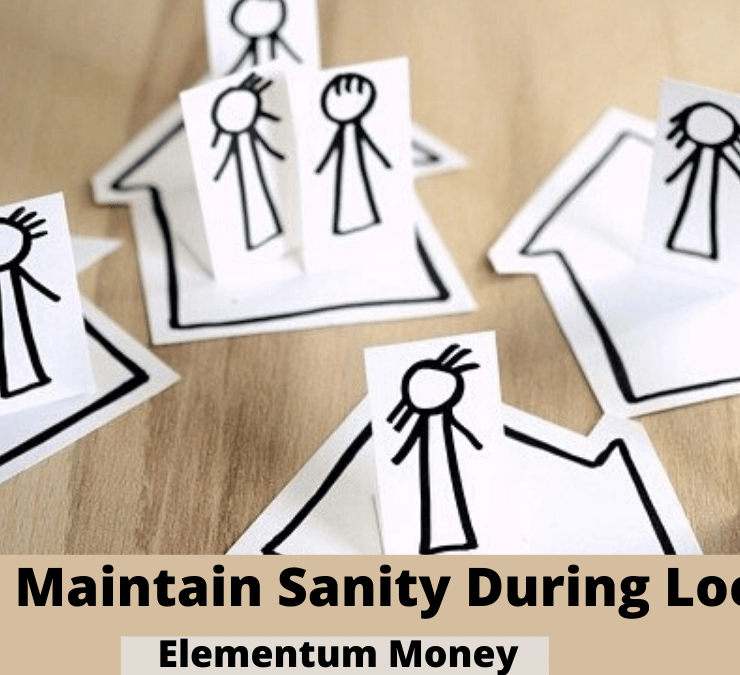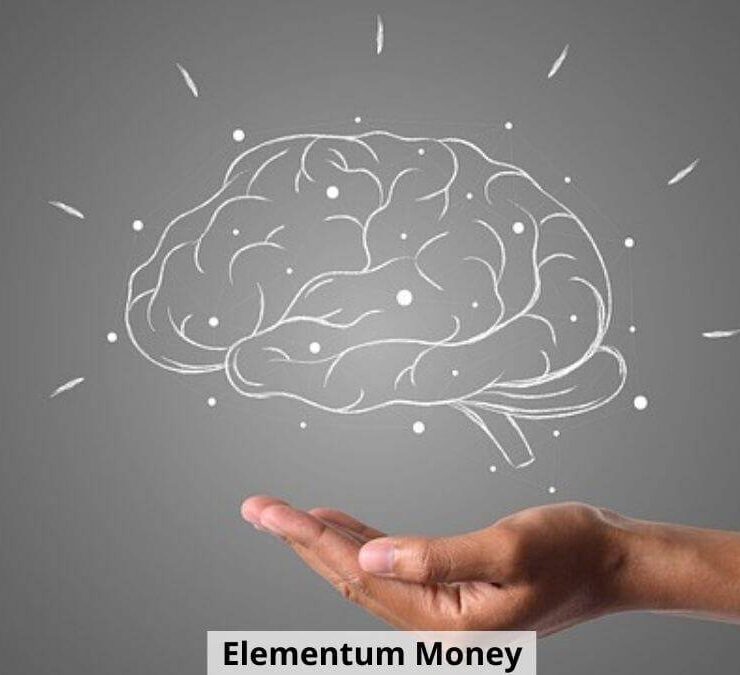
For a long time now, I have been a huge fan of podcasts. They make my commute much more entertaining and sometimes even enlightening.
One of my favorite podcasts has been Freakonomics radio. About a year back they recorded an episode called Big Returns from Thinking Small with two Strategists Owain Service and Rory Gallagher. These two are part of the Behavioral Insights Team, a quasi-government unit in Britain casually referred to as the Nudge Unit.
The name Nudge unit is inspired by a 2009 book called Nudge, written by Richard Thaler and Cass Sunstein. The subtitle gives a great idea of what to expect from the book – Improving decisions about health, wealth and happiness.
I recently read the book and realized there are a lot of insights that the readers of Elementum Money could benefit from. While the book talks about gentle nudges in 3 major spheres – Health, Wealth and Happiness – for the purpose of the blog I will limit myself to the generic concepts and the money insights.
Who is a choice architect?

Choice architects are people who might be creating situations where others need to make a choice
The book takes up from Daniel Kahneman and Amos Trotsky’s hypothesis (presented in their book Thinking Fast and Slow) of 2 types of decision makers – Econs and Humans. Econs are the rational humans as assumed by economics theoreticians. Humans, on the other hand, are the real-life humans who often behave differently from what economists earlier imagined.
Whenever Humans are presented with the task of making a choice, depending on what they choose, the outcome could be drastically different. A choice architect is someone responsible for designing the choice journey, be it a salesperson or a doctor presenting alternate prescriptions. The authors of the book advance the idea that the way the choice journey is created can change the outcome in a big way, giving a lot of power to choice architects.
Paternalistic Libertarianism
The authors call themselves libertarian paternalists where instead of forcing a good option down, they prefer the idea of designing the choice journey by gently nudging the humans towards a beneficial choice.
To give a good idea of what they mean, here’s a quote from the book:
A nudge, as we will use the term, is any aspect of the choice architecture that alters people’s behavior in a predictable way without forbidding any options or significantly changing their economic incentives. To count as a mere nudge, the intervention must be easy and cheap to avoid. Nudges are not mandates. Putting the fruit at eye level counts as a nudge. Banning junk food does not.
Some Learnings About Humans & Decision Making
People make good choices in cases where the options are well-experienced, have short-term implications and can be easily rectified.
Think about choosing an ice-cream – we all know the main ice cream flavors, can choose another one if we don’t like it and the impact of it lasts till the ice cream does. Now, compare it with choosing a mutual fund – we are all trying and testing things there, it is a long-term game with minor fluctuations in between and the cost of a mistake can be high. Considering these points, a lot of us would rather choose to not invest at all.
We all find self-control difficult
I know I do. If you love sweet things and are trying to lose weight, go into a popular dessert shop that you love and stand looking at the display for ten minutes. If you come out without a dessert in hand or the tummy, you are much better at self-control than most people.
The authors mention that self-control problems arise due to two conflicting parts of the brain – the Planner and the Doer. The Planner is the guy more like an Econ – rational with a long-term view. The Doer is of course, more impulsive, emotional and prone to daily temptations with a much more myopic view. There are enough conflicts between the two systems in which one of them is bound to triumph.
Herd behavior is not a myth
We all tend to do things we see people doing around us. If all your colleagues, that you might be fond of, are going out for drinks, you will in all probability join them too. You see only a few outliers around you going to the gym, and not working out then becomes the new normal.
The authors mention two reasons for such herd behavior. Firstly, if everyone around you is following path A, then you instinctively believe that path A is good for you. Second, peer pressure is a huge variable. Most humans care what others or what society thinks of them. In Hindi, a very popular phrase is – log kya kahenge? (What will others say about this?)
Research also shows the intensity of peer pressure. Multiple kinds of research have shown people often change their answers to basic questions, to the extent of being wrong, just to sound similar to other people’s answers.
Mere-measurement effect
When people are asked what they intend to do, they often end up acting in accordance with what they state. So, if today I ask you, how do you intend to improve your financial life and you state that you will start investing in Mutual Funds monthly through SIP, chances are you might actually end up doing it.
The more detailed the path that you mention, higher is the chance of actually doing it. A lot of productivity gurus also talk envisioning the best outcomes for your life or your finances because there again it has a higher probability of prodding you into action towards it.
When do we need help making our decisions?
Some of the factors mentioned by the authors are pretty intuitive – decisions where the results will happen in the long-term at the cost of instant gratification, where decisions are difficult and often require more knowledge, how often can you make that decision, feedback mechanism and knowing what you like.
Government nudge of R.E.C.A.P.
Humans have a problem with money mapping. Most financial products come in the confusing jargon which does not really make the total cost to consumer very transparent, making decision making that much more difficult.
The authors propose a government initiative called R.E.C.A.P. which stands for Record, Evaluate and Compare Alternate Prices. This essentially calls for a government mandate to ask all services to put forth any and every cost of their service in a standardized template to make it easy for comparison.
Mental shortcuts for simpler decision making
With more options to choose from, humans tend to take mental shortcuts to simplify the decision making – Companies like Amazon and Netflix are making this maze of multiple options simpler to traverse. Ever seen the tab of – Others who bought Product X also bought this or even something like this – Since you watched X, suggested Movies/TV Series for you? This practice is called collaborative filtering which is making this process easier for the shoppers or the viewers.
SOME FINANCIAL NUDGES

Decisions that matter often confuse us. We can benefit from a well-meant nudge
Simplifying enrollment
Often enough we choose to delay anything we see as being complicated, which is another reason most of us organize our finances so poorly. The authors recommend simplifying the 401(k) enrollment form and process to ensure people don’t stumble at the first step itself.
Making enrollment automatic
Another suggested nudge was to require an opt-out from people not wanting to enroll. If humans have to take an action, they might end up not doing that at all, in this case to their benefit. Automatic enrollment has been shown by research as having two major benefits – participants join sooner and more participants join eventually. (Peer pressure at play here? Maybe)
Save more tomorrow
One of my favorite parts of the book. The authors mention how default options ended up choosing a very low level of the contribution percentage and humans are loathe to make a change, even if it is for their benefit. One program now implemented in some companies is called – Save More tomorrow.
This program invites participants to commit to saving a higher percentage with every increment. So, if you are contributing 4{76b947d7ef5b3424fa3b69da76ad2c33c34408872c6cc7893e56cc055d3cd886} (Rs. 1,200) to your retirement fund at a monthly salary of Rs. 30,000 and commit to upping it by 1{76b947d7ef5b3424fa3b69da76ad2c33c34408872c6cc7893e56cc055d3cd886} with every increment. Next year, you end up paying 5{76b947d7ef5b3424fa3b69da76ad2c33c34408872c6cc7893e56cc055d3cd886} (Rs. 1750) on your Rs. 35,000 salary. While you end up getting a slightly lesser increment in hand every month, you don’t feel the pinch at all.
Some reasons for that are – i) many people want to save but delay it and never end up getting to it, ii) Self-control is easier to think of in future tense and if you don’t even feel the pinch, then it’s a win-win iii) Combining pay raise and higher savings works better as the pay cheque never goes down, taking care of loss aversion iv) Since you don’t end up doing much actively, human tendency towards inertia is also fed in to 🙂
The more intensely that you track markets, more probable you are to buy high and sell low
The authors give an interesting example of two investors – Vince and Rip Van Winkle. Vince being a stockbroker, constantly tracks markets whereas Rip Van Winkle has been told he will be asleep for 20 years. Data tells us RVW will be a more successful investor considering he is not awake to let his emotions make decisions on the basis of market volatility.
Investors use a rule of thumb for asset allocation decisions
Most end up choosing a simple 50:50 ratio of stocks and bonds. If offered three mutual funds as part of a plan, most people will end up choosing 33.3{76b947d7ef5b3424fa3b69da76ad2c33c34408872c6cc7893e56cc055d3cd886} allocation in all 3. In this case, it is better to go with services which tweak your asset allocation on the basis of age and time horizon, what is often called Lifecycle Investing. In fact, in India, NPS investment does provide that option whereby professional fund managers will manage your investments on the basis of your age.
All your eggs in one basket is a problem
Many people are offered Employee Stock Options or ESOPs as part of their compensation. A lot of them end up viewing it as free money, which it is not. More importantly, a lot of us get biased enough to pump in all our investing money only and only into the company stock. We often (mistakenly) believe that since we work there, we know the future prospects. To enlighten this fact, the authors present the story of an Enron employee who lost most of his retirement funds when the company went bust.
Mortgages
Thankfully the Indian market is still much simpler than the US market when it comes to mortgages with mostly the plain vanilla options. The authors here too recommend the R.E.C.A.P. policy with more transparent costs for customers to understand better what they are going into.
Credit cards
It is a well-known fact that (financial) self-control is more difficult when using a credit card. We don’t feel the pinch of taking out the cash and giving it away when the amount can simply be swiped. The authors also show how most of us don’t even realize the total cost we end up paying. Many of us fall into the trap of Minimum amount due and end up paying much higher costs. The authors propose credit card companies give a clear break-up of the costs that a customer has actually paid in the course of a year for a better reality check and hopefully future self-control in spending practices.
Yes, another long post. However, some books often end up giving me a lot of food for thought which I wouldn’t feel right about if I didn’t share it with my readers.
If you are wondering why you need to know about these nudges, there are a lot of things you can implement for yourself at an individual level – be it to automatically save more tomorrow or to closely scan and understand the costs that you pay for services or even rationally try and evaluate some actions you might be taking as part of a herd. With this book, I can just hope to have nudged you enough to make a change for the better.
What change will you make today? Let me know in the comments or email me at aparna@elementummoney.com





Leave a Reply